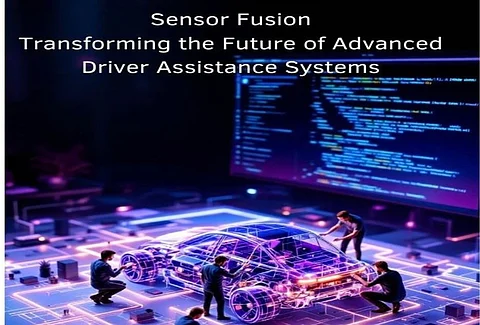

In this rapidly growing digital era, the evolution of sensor fusion technology is reshaping the landscape of Advanced Driver Assistance Systems (ADAS). By integrating multiple sensing modalities, these systems achieve unparalleled safety and efficiency in autonomous driving. This article, drawing on expert insights from Vraj Mukeshbhai Patel, explores the cutting-edge innovations revolutionizing vehicular perception and control mechanisms.
Sensor fusion lies at the core of modern ADAS, combining data from cameras, LiDAR, radar, and ultrasonic sensors to create a unified perception of the vehicle’s surroundings. This multi-sensor approach enhances detection accuracy, allowing vehicles to identify objects with a 99.9% classification accuracy under optimal conditions. Compared to single-sensor systems, which typically operate with 85-90% accuracy, sensor fusion provides a significant leap forward in reliability and road safety.
The growing complexity of sensor integration demands robust real-time processing capabilities. Modern ADAS platforms handle over 3.2 terabytes of sensor data per hour while maintaining processing latencies as low as 35 milliseconds for critical safety functions. These rapid-response mechanisms ensure precise vehicle reactions, reducing collision rates by over 40% in various driving environments.
Weather conditions such as rain, fog, or snow have been a challenge for autonomous navigation. Conventional sensor technologies are not suited for such conditions. Modern fusion algorithms, however, have adaptive weighting techniques which can dynamically adjust sensor input to achieve accuracy when exposed to bad weather conditions. 95% of optimal performance is retained under adverse conditions, yielding very high performance with the earlier ADAS architectures.
One of the most complex challenges in sensor fusion is the synchronization of diverse data Very few, if any, problems in sensor fusion can prove to be more complex than diverse data streams in synchronization. Advanced timestamp-based data association methods push the temporal alignment error to ±25 microseconds, which minimizes perceptual error and improves vehicle responsiveness. There are also significant spatial calibration enhancements to guarantee that today's systems will tie within ±1.8mm in translation and ±0.08 degrees in rotation.
The shift from rule-based decision-making to deep learning-driven sensor fusion has transformed how autonomous vehicles interpret their environment. Advanced machine learning models process sensor inputs with 94.5% classification accuracy while reducing computational resource consumption by 42%. These intelligent systems are also capable of predictive risk assessment, providing drivers with warnings up to 2.5 seconds before a potential collision.
Classic centralized computing architectures fail by a wide margin to cope with the loads of data needed for sensor fusion; conversely, advancements in edge computing facilitate distributed processing of data, reducing latencies by 52% and thus enabling on-time decision-making. These designs are quite reliable and capable of operating within a range of 30W, thus becoming applicable for a large-scale deployment in vehicles.
Ongoing advances in sensor design continue to push forward the capabilities of ADAS. The latest in LiDAR systems has effective ranges of 250 meters while outputting over 2.2 million data points per second for mapping environments in high resolution. Likewise, HD imaging sensors operating at 12 megapixels and 90 frames per second promise enhanced detection of objects in traffic scenarios with significant complexity.
As sensor sophistication advances, standardized communication protocols are crucial for seamless integration. Unified data formats and processing interfaces can lower integration costs by 28% while enhancing system compatibility by 65%. Standardized frameworks facilitate interoperability across ADAS modules, improving scalability, efficiency, and cross-platform functionality, ultimately accelerating the adoption of intelligent automotive systems and reducing development complexity.
Artificial intelligence, adaptive algorithms, and real-time reconfiguration techniques will direct sensor fusion technology into the future, enhancing data processing accuracy and efficiency. Future neural networks will analyse sensor data at speed levels of 15-20 milliseconds while maintaining a classification accuracy of 93%. These developments will offer a more prompt and trustworthy autonomous system. Besides, the improvement in hardware acceleration proposes less energy consumption by 35%, thus promoting an energy-efficient next-generation ADAS. With these advancements, automotive and industrial applications will become smarter and greener by effectively integrating different sensor modalities in the decision-making process.
In summary, insights by Vraj Mukeshbhai Patel on sensor fusion technology underpin its importance with respect to the future of ADAS. Trends in multi-sensor integration, real-time processing, and AI are pulling the industry toward safer and more efficient autonomous driving solutions. Sensor fusion will become increasingly important, influencing the safety of automobiles and the integrity of road infrastructure; in turn, this will ensure a smart and reliable journey experience for all."
